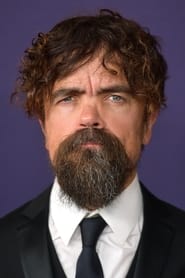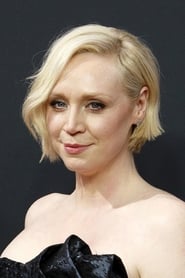
Ask Your Own Question
What is the plot?
In "Anatomy of an Episode: A Golden Crown," the episode begins with a focus on the aftermath of the events in the previous episodes, particularly the growing tension between the various factions vying for power in Westeros. The episode delves into the creative process behind the pivotal moments of "A Golden Crown," showcasing how the writers and producers crafted the narrative and visual elements that define the episode.
The first major sequence highlights the character of Daenerys Targaryen, who is grappling with her new role as a leader and the weight of her family's legacy. The scene captures her emotional turmoil as she reflects on her past and the sacrifices she has made. The filmmakers discuss the importance of her character development, emphasizing her transformation from a timid girl into a determined woman ready to claim her birthright.
Next, the focus shifts to the character of Viserys Targaryen, Daenerys's brother, who is increasingly desperate to reclaim the Iron Throne. The episode illustrates his volatile nature, showcasing a scene where he confronts Daenerys with anger and frustration. The tension between the siblings is palpable, as Viserys's entitlement clashes with Daenerys's growing independence. The filmmakers highlight the significance of this conflict in setting the stage for future confrontations.
The narrative then transitions to the Dothraki culture, emphasizing the visual storytelling that brings this world to life. The episode features behind-the-scenes footage of the production team working to create the authentic look and feel of the Dothraki camp. The filmmakers discuss the challenges of portraying this nomadic lifestyle and the importance of accurately representing their customs and traditions.
As the episode progresses, the focus shifts to the character of Khal Drogo, Daenerys's husband. The filmmakers explore his complex relationship with Daenerys, showcasing scenes that highlight his protective nature and the bond that is forming between them. The emotional depth of their relationship is underscored by the cinematography, which captures intimate moments that reveal their growing connection.
The tension escalates when Viserys, feeling humiliated and powerless, decides to confront Drogo. The filmmakers provide insight into the choreography of this confrontation, detailing how the actors prepared for the intense scene. Viserys demands a crown, believing that he is entitled to power and respect. The scene is charged with emotion as Drogo, initially calm, becomes increasingly agitated by Viserys's arrogance.
In a pivotal moment, Drogo responds to Viserys's threats with a brutal display of power. The filmmakers describe the decision to have Drogo take action against Viserys, emphasizing the significance of this moment in establishing Drogo's character as a formidable leader. The scene culminates in Drogo pouring molten gold over Viserys's head, resulting in a shocking and violent death. The filmmakers discuss the impact of this moment on the audience and its implications for Daenerys's journey.
Following Viserys's death, the episode shifts focus back to Daenerys, who is left to grapple with the consequences of her brother's actions. The filmmakers explore her emotional state, highlighting her mixture of grief, anger, and newfound resolve. This moment marks a turning point for Daenerys, as she begins to embrace her identity as a Targaryen and a leader.
The episode concludes with a reflection on the themes of power and ambition that run throughout the series. The filmmakers discuss how "A Golden Crown" serves as a critical juncture in the narrative, setting the stage for the unfolding drama in Westeros. The final scenes emphasize the stakes involved for all characters, leaving viewers with a sense of anticipation for the conflicts to come.
What is the ending?
In the episode "Anatomy of an Episode: A Golden Crown," the ending focuses on the brutal and climactic moment when Khal Drogo meets his fate. After a series of events that lead to his decline, Daenerys Targaryen is faced with a heartbreaking decision regarding her husband. The episode concludes with Drogo's death and Daenerys's transformation as she embraces her destiny, culminating in the hatching of her dragon eggs.
Expanding on the ending, the scene begins with Khal Drogo, once a powerful and fearsome leader, now lying weak and incapacitated due to a wound that has become infected. His once-mighty presence is diminished, and he is unable to fulfill his role as a warrior and husband. Daenerys, filled with desperation and love, watches over him, her heart heavy with the weight of his suffering. She is torn between her loyalty to him and the realization that he is slipping away.
As Drogo's condition worsens, Daenerys seeks the help of a healer, but the traditional methods prove ineffective. In a moment of desperation, she turns to the dark magic of the witch, Mirri Maz Duur, who had previously warned her of the consequences of her actions. Daenerys makes a fateful choice, believing that she can save Drogo by sacrificing a part of his humanity. The ritual is intense and filled with tension, as Daenerys hopes for a miracle.
However, the outcome is tragic. Drogo is revived but is left in a state of emptiness, a shell of the man he once was. He cannot speak or move, and the love that once connected them is now lost. In a heart-wrenching moment, Daenerys realizes that the price of her decision was too high. She cannot bear to see him in this state, and with tears in her eyes, she takes his life, ending his suffering. This act is both a release for Drogo and a profound moment of transformation for Daenerys.
In the aftermath of Drogo's death, Daenerys is engulfed in grief but also a newfound strength. She gathers the dragon eggs that were gifted to her, and in a powerful and symbolic act, she places them on Drogo's funeral pyre. As the flames consume the body of her husband, Daenerys steps into the fire, embracing her destiny as the Mother of Dragons. The scene is visually striking, with the fire illuminating her figure as she emerges unscathed, holding three newly hatched dragonlings. This moment signifies her rebirth and the awakening of her true power.
The episode concludes with Daenerys standing amidst the ashes, surrounded by her dragons, a stark contrast to the vulnerable woman she was at the beginning of the series. This transformation marks a pivotal point in her journey, setting the stage for her future as a formidable leader in the struggle for the Iron Throne. The fate of Khal Drogo is sealed with his death, while Daenerys's path is irrevocably altered, as she steps into her role as a force to be reckoned with in the world of Westeros.
Is there a post-credit scene?
In the episode "Anatomy of an Episode: A Golden Crown," there is no post-credit scene. The episode serves as a behind-the-scenes look at the making of the pivotal episode "A Golden Crown" from Season 1 of Game of Thrones. It features interviews with the cast and crew, insights into the production process, and discussions about the themes and character developments within the episode. The focus is on the creative decisions made during filming, particularly regarding the intense and dramatic moments that define the episode, such as the fate of Viserys Targaryen and the significance of the crown. The episode concludes without any additional scenes or content beyond this exploration of the show's production.
What is the significance of the crown in the episode 'A Golden Crown'?
The crown in 'A Golden Crown' symbolizes power and authority, particularly in the context of the Iron Throne. It represents the brutal and often violent struggle for dominance in Westeros. The episode culminates in a pivotal moment where Viserys Targaryen, desperate for recognition and power, demands a crown from Daenerys Targaryen, leading to his ultimate demise.
How does Daenerys Targaryen's character evolve in this episode?
In 'A Golden Crown', Daenerys Targaryen undergoes significant character development. Initially portrayed as a submissive figure under her brother Viserys's control, she begins to assert her own identity and strength. The episode marks a turning point where she embraces her Targaryen heritage, culminating in her decision to stand up to Viserys and ultimately take control of her own destiny.
What role does Khal Drogo play in the events of 'A Golden Crown'?
Khal Drogo plays a crucial role in 'A Golden Crown' as both a protector and a catalyst for Daenerys's transformation. His love and support empower her to defy Viserys. The episode showcases Drogo's fierce loyalty and strength, particularly when he confronts Viserys, ultimately leading to a violent but necessary act that solidifies Daenerys's position.
What are the consequences of Viserys Targaryen's actions in this episode?
Viserys Targaryen's actions in 'A Golden Crown' lead to dire consequences for him. His arrogance and entitlement culminate in his demand for a crown, which he believes will elevate his status. However, his disrespect towards Daenerys and his underestimation of Drogo result in his brutal death, serving as a stark reminder of the dangers of hubris in the quest for power.
How does the episode depict the theme of power dynamics between characters?
In 'A Golden Crown', the power dynamics between characters are vividly depicted through the interactions between Viserys, Daenerys, and Khal Drogo. Viserys's attempts to assert dominance over Daenerys and Drogo highlight his desperation and insecurity. In contrast, Daenerys's growing confidence and Drogo's protective nature illustrate a shift in power, ultimately leading to Viserys's downfall and Daenerys's rise.
Is this family friendly?
"Anatomy of an Episode: A Golden Crown" from the "Game of Thrones" specials delves into the making of the episode "A Golden Crown." While it primarily focuses on behind-the-scenes insights, it does touch upon themes and elements that may not be suitable for children or sensitive viewers.
Potentially objectionable or upsetting aspects include:
- Violence: Discussion of violent scenes, including the portrayal of death and conflict, which are central to the series.
- Death: The episode explores the emotional weight of character deaths, which can be distressing.
- Power Struggles: Themes of betrayal and ambition that may be intense for younger audiences.
- Mature Themes: References to adult themes such as greed, revenge, and moral ambiguity.
- Graphic Imagery: Insights into the special effects and makeup used to create realistic depictions of violence and injury.
These elements contribute to the overall tone of the series, which is often dark and complex, making it less suitable for a family-friendly viewing experience.
























